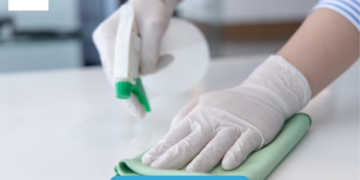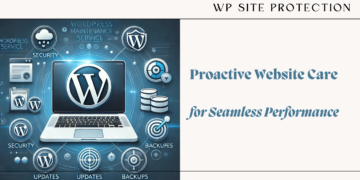In today’s world, maintaining a clean and safe environment has never been more important. Germs, bacteria, and viruses lurk in every corner of our daily lives, often invisible to the naked eye but capable of causing illness and infection. Proper sanitation is essential, and hygiene cleaning solutions have become a critical line of defense in preventing the spread of germs. From homes to offices and public spaces, using the right products and cleaning methods can dramatically reduce the risk of contamination and promote a healthier environment.
In this article, we’ll explore how hygiene cleaning solutions are instrumental in halting the transmission of harmful germs and why they should be a key component of any cleaning routine.
The Importance of Hygiene Cleaning Solutions
Hygiene cleaning solutions refer to a range of products specifically formulated to disinfect surfaces, remove dirt, and eliminate harmful microorganisms. These products are designed to target germs that can lead to infections, including bacteria, viruses, and fungi.
Without proper cleaning, germs can easily spread through direct contact with contaminated surfaces or through droplets in the air. High-touch areas such as doorknobs, light switches, countertops, and shared devices are breeding grounds for bacteria. Regular cleaning with effective hygiene solutions helps stop the spread of these germs, protecting both personal and public health.
Key Germ Hotspots in Everyday Life
Germs can be found anywhere, but certain areas are particularly prone to contamination. Here are a few common hotspots where germs thrive:
- Kitchens and Bathrooms:
Kitchens and bathrooms are notorious for harboring germs, especially on sinks, countertops, and faucet handles. Food preparation areas can become contaminated with bacteria such as E. coli and Salmonella, while bathrooms can spread harmful microorganisms like norovirus. - Offices and Workspaces:
Desks, keyboards, phones, and communal areas in offices are high-touch surfaces where germs can easily transfer from person to person. Without regular cleaning, shared workspaces can become a hub for germ transmission. - Public Spaces:
Public transportation, gyms, shopping centers, and hospitals are all environments where large numbers of people interact. These high-traffic areas require routine disinfection to prevent the spread of illness.
By using effective hygiene cleaning solutions in these areas, the number of harmful pathogens can be significantly reduced, minimizing the risk of infection.
How Hygiene Cleaning Solutions Work to Kill Germs
Hygiene cleaning solutions are formulated with active ingredients that attack and neutralize germs in several ways:
- Disinfectants:
These products are specifically designed to kill germs on contact. Disinfectants often contain chemicals such as alcohol, chlorine, or quaternary ammonium compounds, which destroy the outer layers of viruses and bacteria, rendering them inactive. - Sanitizers:
Sanitizers reduce the number of germs on surfaces to a safe level, according to public health standards. They are commonly used on food-contact surfaces to ensure hygiene without leaving behind harmful residues. - Detergents and Cleaners:
While disinfectants and sanitizers target germs, detergents help to physically remove dirt, grime, and organic material from surfaces. This is essential because germs can hide within these substances, making it harder for disinfectants to be effective.
A combination of these hygiene cleaning solutions is often used to ensure that both visible dirt and invisible germs are thoroughly eliminated.
Benefits of Using Hygiene Cleaning Solutions
1. Improved Health and Safety
The primary benefit of using hygiene cleaning solutions is the reduction of illness and infection. Germs can spread quickly, especially in public places, and without proper cleaning protocols, the risk of transmission increases. Regularly cleaning with hygiene solutions reduces the presence of germs, lowering the likelihood of individuals getting sick.
2. Prevention of Cross-Contamination
Cross-contamination occurs when germs from one surface or person are transferred to another, often unknowingly. This can happen in homes, hospitals, and food preparation areas. Hygiene cleaning solutions, when used correctly, can prevent this by eliminating germs at their source, making it harder for them to spread to other surfaces or people.
3. Enhanced Productivity in Workplaces
In office settings, the spread of germs can lead to increased absenteeism due to illness. A clean, sanitized workspace means fewer sick employees and a more productive workforce. Providing a safe, germ-free environment also boosts employee morale, as workers feel more comfortable knowing their health is being protected.
4. Long-Term Savings
While investing in hygiene cleaning solutions may seem like an extra expense, it can actually save money in the long run. Preventing the spread of germs reduces healthcare costs, employee sick days, and the need for more extensive deep cleaning services that may be required if germs are allowed to proliferate unchecked.
5. Positive Environmental Impact
Many hygiene cleaning solutions today are formulated to be eco-friendly. These products are designed to break down safely in the environment, reducing the impact on ecosystems while still effectively killing germs. Opting for green cleaning products is not only good for health but also for the planet.
Best Practices for Using Hygiene Cleaning Solutions
To maximize the effectiveness of hygiene cleaning solutions, it’s essential to follow these best practices:
1. Choose the Right Product for the Job
Not all cleaning solutions are the same. Be sure to choose products that are appropriate for the surface and the type of germs you are targeting. For example, sanitizers may be sufficient for food-contact surfaces, while disinfectants are more effective for high-touch areas in public spaces.
2. Follow Proper Cleaning Protocols
Always read the instructions on cleaning products carefully to ensure proper usage. Some disinfectants need to remain on surfaces for a specific amount of time to be effective, so it’s essential not to wipe them off too soon.
3. Clean High-Touch Surfaces Frequently
Surfaces that are frequently touched by multiple people should be cleaned regularly, if not several times a day. This includes things like light switches, elevator buttons, doorknobs, and shared office equipment.
4. Practice Personal Hygiene
Encouraging proper hand hygiene goes hand-in-hand with using hygiene cleaning solutions. Hand washing and sanitizing help reduce the number of germs on hands, minimizing the risk of transferring them to surfaces or other people.
Conclusion
In a world where germs and bacteria are constant threats, hygiene cleaning solutions play a critical role in protecting public health. These solutions help prevent the spread of harmful microorganisms, safeguarding homes, workplaces, and public spaces from potential outbreaks. By incorporating the right cleaning products and practices into daily routines, we can create cleaner, healthier environments that minimize the risk of infection and promote overall well-being.






















































